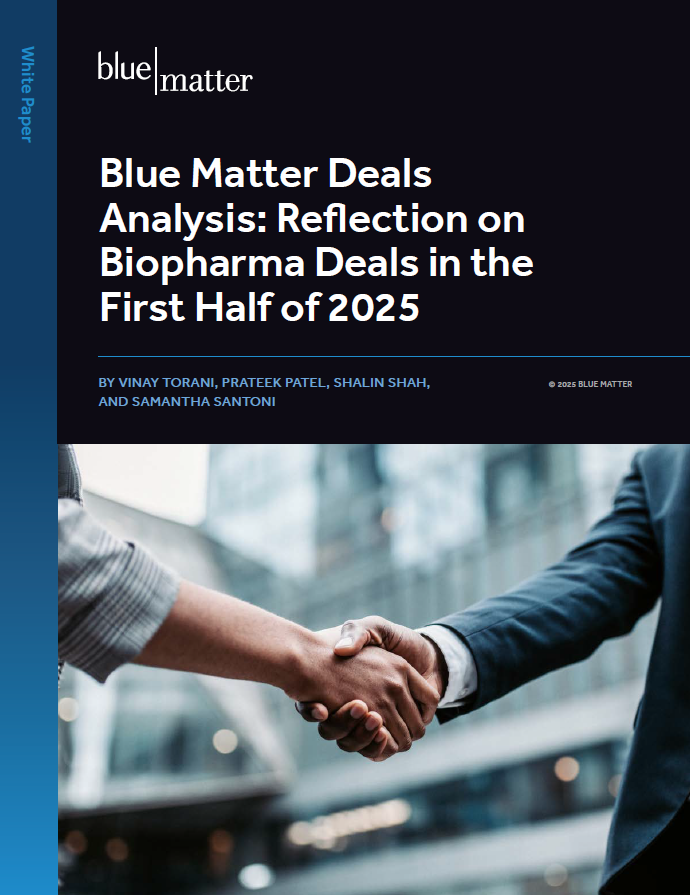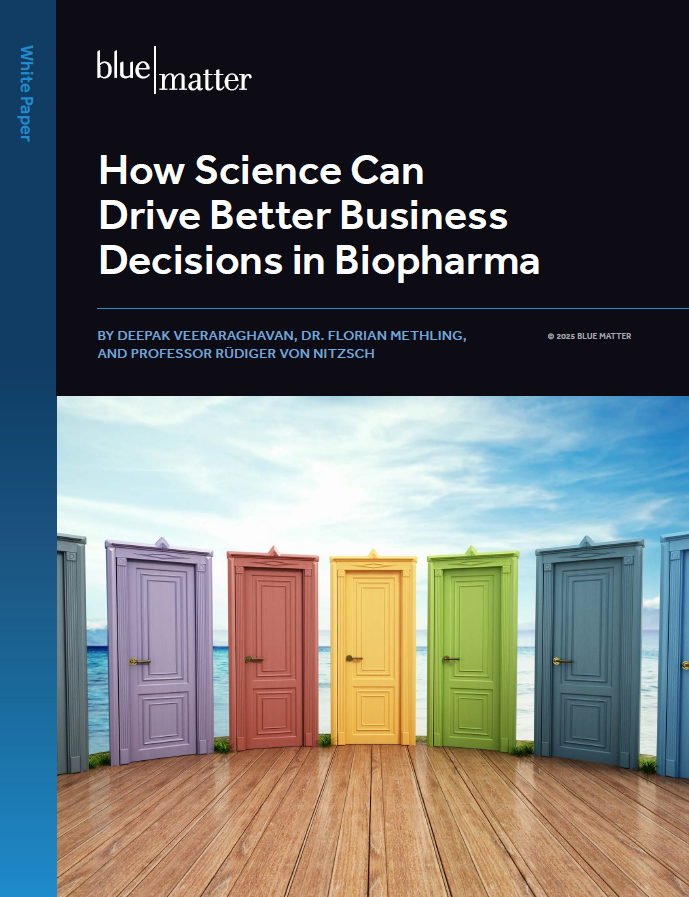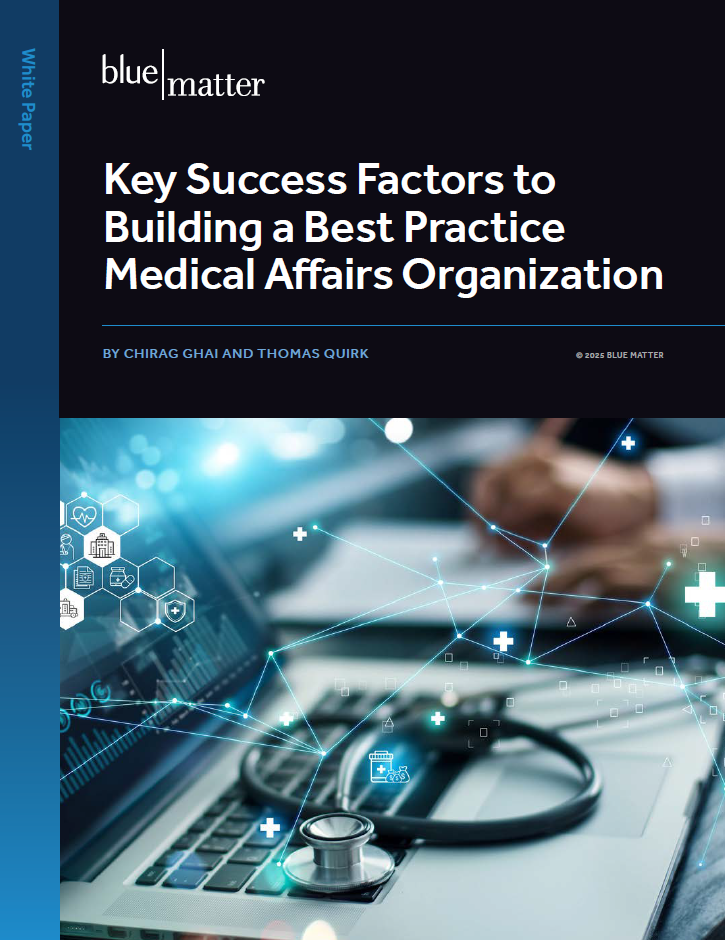
Nashville, TN (aka “Music City”) hosted the global annual meeting of the Medical Affairs Professional Society (MAPS) just a few weeks ago, March 26-29. MAPS’ mission is to “advance the Medical Affairs profession and increase its impact across the biopharmaceutical and device industry” The global annual meeting, the EMEA annual meeting (which runs May 14-16 in Lisbon), and a range of other events are key to MAPS’ mission.
Through those events, MAPS members discuss and share information and best practices about a wide range of Medical Affairs (MA)-related topics. Last month, we sent a combined team to the MAPS global annual meeting. This team included people from Salience Learning as well as Blue Matter.
After the meeting, members of both teams compared notes to see what each thought were the most interesting or relevant themes that were addressed there. This relatively short article provides a summary of the combined team’s key takeaways regarding those themes and their implications for biopharma companies.
Not surprisingly, the concept of patient centricity permeated the conference (the full agenda is here). Increasingly, biopharma companies are working to put patients’ needs, concerns, and perspectives at the center of their work, and MA teams are on the front lines of that effort. As you’ll see, each of the themes on our team’s list carries the common thread of patient centricity.
Theme 1: Engaging patients on a deeper and more “authentic” level
One of the main themes of the conference was on maximizing the positive impact that MA has on patients and care, with a particular focus on more effective patient engagement as a critical lever. There were several sessions on the topic, as MA teams are seeking the best ways to scale their patient-centric efforts, leading the larger organization’s charge to develop and provide new therapies in partnership with patients, rather than simply developing them for patients.
One session, Beyond the Data: Developing Medical Affairs Patient Engagement Strategies and Patient Focused Communication Plans, considered how pharma companies can be more patient centric in their patient communications and materials. The panelists generally agreed that there is a gap between the ideal state and the status quo, driven in large part because communication materials are written by those who work in healthcare rather than by those who receive healthcare.
The panelists discussed a range of potential solutions, which included
- Emphasizing the use of plain language summaries of clinical studies
- Working with patients as co-authors in publications
- Using more patient-centric terminology (e.g., it’s not a journey or a battle, but an odyssey; patients don’t fail treatment, treatment fails patients)
- Leveraging more diverse global perspectives (i.e., being less US-focused)
- Increasing patient education via patient advocacy groups (PAGs), and also including patient caregivers, ultimately allowing for shared decision making between patients and physicians
- Gathering more feedback on protocols from patients’ and their caregivers’ lived experiences
Another session, The Role of Medical Affairs in Establishing True Patient Partnerships Across the Drug Development Lifecycle focused on more effectively partnering with patients through the clinical development process. As mentioned above, this can result in better study designs that are informed by social determinants of health (SDOH) and more reflective of patient needs, but it can also improve trial recruitment and retention, and generally result in a more fruitful development and delivery process.
Of course, there are challenges to doing this effectively, and the session teed up discussion on some of those, including:
- Identifying the right people and advocacy organizations to collaborate with
- Addressing legal and compliance challenges
- Managing regional differences in the level of direct engagement that is allowed
- Demonstrating the value of the input and gaining management buy-in
- Integrating effective engagement into development timelines
- Facilitating cross-functional coordination
Over time, these challenges will be addressed as the field moves forward and increased collaboration with patients in the development process will become the norm.
Theme 2: Measuring Medical Affairs’ Impact
One hot topic revolved around the challenge of how to measure the impact of MA’s work. Historically, MA metrics have revolved around measuring activities, such as the number of abstracts / publications developed, the number of person-to-person engagements, the number of inquiries from healthcare professionals (HCPs), the level of HCP attendance at educational programs, and so on.
While those metrics do have some utility, the burning question is: How do we measure and communicate MA’s value beyond traditional activity metrics? Developing new approaches to measuring the true impact of MA’s efforts will be necessary to meet stakeholders’ evolving needs for knowledge dissemination, education and most importantly, improving patient care.
Several sessions addressed this topic, including Cracking the Code on Medical Insights that Will Improve Strategy and Demonstrate Medical Impact. Various new potential metrics were discussed. Some possibilities include measuring real time learning (perhaps via pre- and post-surveys to ad board participants), measuring the impact on therapy placement in guidelines, formulary access, and so on.
As continued focus in this area advances the state of the art, biopharma will need to establish meaningful impact metrics or KPIs that MA can track internally to the organization and externally to the marketplace in a compliant manner. This may result in new categories of metrics that relate the MA’s impact on the current marketplace, MA’s impact on other counterparts within the company, and MA’s accountability to the overall strategy.
Theme 3: Enhancing Medical Affairs’ Contributions to Market Access
This theme is a bit broader than many people might initially think. It really encompasses MA’s potential impact on a range of stakeholders that go beyond patients and HCPs to optimize overall access to a given therapy. These stakeholders can include pharmacies and specialty pharmacies, institutions, PBMs, payers, and pathway developers. While many of these stakeholders are engaged by account management personnel, those engagements can be enriched by the presence of medical teams, which would include medical science liaisons and field HEOR personnel. Those individuals are often better equipped to discuss new medical evidence and its potential impact on those stakeholders.
Furthermore, the true value of a brand often encompasses discussions on HEOR that fall outside the label, precluding sales teams from proactively communicating that information. Account managers can sometimes have these discussions—and at some companies are allowed to proactively do so—however, they are often not appropriately trained to deliver evidence and generate insights in ways that would be meaningful to those stakeholders. Therefore, collaboration between access, sales, and medical teams is needed to truly optimize access and the overall value of the therapy.
For biopharma companies, the challenge is multi-faceted. They must determine how best to facilitate collaboration while remaining compliant. In addition, they’ll need to decide which roles are best suited to proactively generate insights and communicate this type of information, and then train them to do it effectively. Related to this, MA will need to play a leading role in:
- Establishing SOPs and clear guidance for MSLs
- Defining and aligning reporting responsibilities
- Establishing SOPs for dissemination of off label information
- Regularly evaluating MSL compensation structures
- Establishing SOPs and monitoring MA and Sales collaboration
One session, Commercialization Basics with a Focus on Market Access for Medical Affairs Professionals, underscored the need for MA teams to also boost their own levels of business acumen. It’s true that there have always been “firewalls” between MA and commercial functions…and that MA’s focus is largely on the patient and the science. However, there is still a need for MA teams to understand how the business works and how scientific and medical insights relate to the decisions that affect market access and commercialization more broadly. MA teams will be able to leverage greater business acumen to generate better insights, link them to the business needs, develop strategies, and communicate with all stakeholders more effectively.
Of course, the concept of patient centricity flows through this theme as well, though it’s more of an undercurrent. The objective for all of this is to ensure that any given therapy is appropriately used whenever and wherever it can make a positive impact on patients…and optimizing market access is key to that.
Theme 4: Making Medical Affairs as Effective as Possible
Our final theme is a perennial one. As a function, MA is always working to maximize its own organizational effectiveness. However, that effort is taking on enhanced meaning these days as MA continues to evolve into a key leader in the biopharma enterprise, and a hub for a wide range of strategic needs including evidence generation, insight generation, communications, stakeholder engagement, and more.
One standout session was an Organon case study that addressed the challenges and lessons learned when starting up a new MA organization: A New Journey on the Horizon: Starting Up a New Medical Affairs and Outcomes Research Organization. The session highlighted the fact that today’s dynamic market environment is pushing biopharma companies to respond quickly, and that MA and HEOR teams must be purpose-built with clear strategic missions and adaptability in mind.
The case study outlined several challenges that exist when establishing a new MA organization, including
- Workload management
- Allocation of resources across affiliates / countries
- Remaining in compliance across a range of complex areas
Building a successful MA / HEOR organization from the ground up requires setting up operational work streams in several areas, such as
- Services – Medical services, medical information / promotional review, contact centers
- Training – Medical product training programs, medical education, grants
- Communication – Scientific exchange and field medical operations
- Organization – Organizational structure, tracking, hiring, onboarding and training, SOP development, learning and development, communications
- Operations – Budgeting, systems, transition service agreements, contracts, data
Underpinning all the above must be a culture of information sharing and collaboration.
Another session, The Role of Medical Affairs in Addressing Current and Emerging Healthcare Challenges, discussed how the role of the MA organization continues to evolve from its former position as a type of bridge between clinical development and commercial into a strategic leader in a range of integrated areas.
In particular, it addressed the growing partnership with HEOR, and MA’s more central role in guiding / owning the development of integrated evidence plans. The session also stressed that MA leaders will increasingly need to develop localized operating models due to differing needs and requirements across geographic regions. This is especially amplified when creating the infrastructure and capabilities for generating local evidence – evidence that can be generated within in-country, patient populations. This is especially so, as several large ex-US markets are beginning to look like healthcare technology assessment (HTA) markets (e.g., Argentina and Brazil).
Closing the Conference: A Fireside Chat with the Lacks Family
The final day of the conference culminated in a sharing session with the family of Henrietta Lacks. Lacks, who passed away from cervical cancer in 1951, was the source of the first immortalized line of cancer cells, which were taken from her during a biopsy that year. The HeLa cell line continues to be used today, and has been extremely valuable to cancer research, helping to transform cancer treatment over the decades. No consent was required to culture those cells at the time, so neither she nor her family were informed or compensated. The family only became aware of the cell line’s existence in 1975.
The session brought the concept of patient centricity full circle. Sometimes, it can be easy to forget that behind each data point is a patient’s life. The increased focus on patient centricity brings more compassion and empathy, and also underscores the fact that patients are not only receiving treatment, they are also actively contributing to science and we must show them respect, be inclusive, and share our collective scientific successes and failures.
It’s fitting to close with this final comment from Henrietta Lacks’ great-granddaughter, Veronica, which reminds us that behind our work,
“…is a mother, a father, a wife, someone’s family member. We must be very mindful of what we do and how we do it. We have to look at the broader picture and stop and think, at every step, ‘How is my work impacting patients and their families & communities?’”








